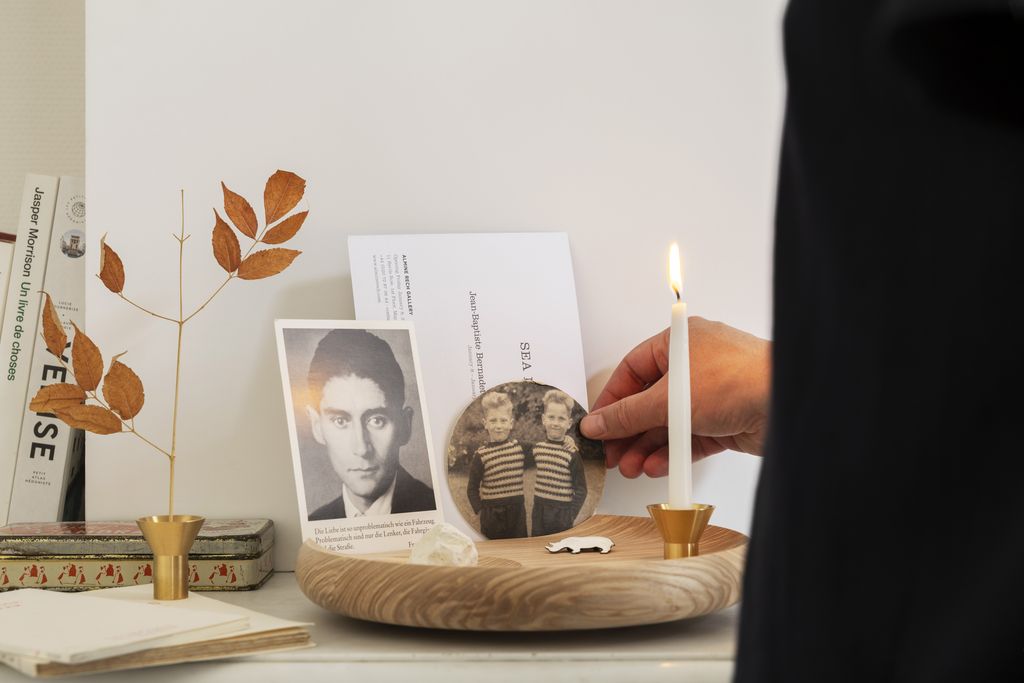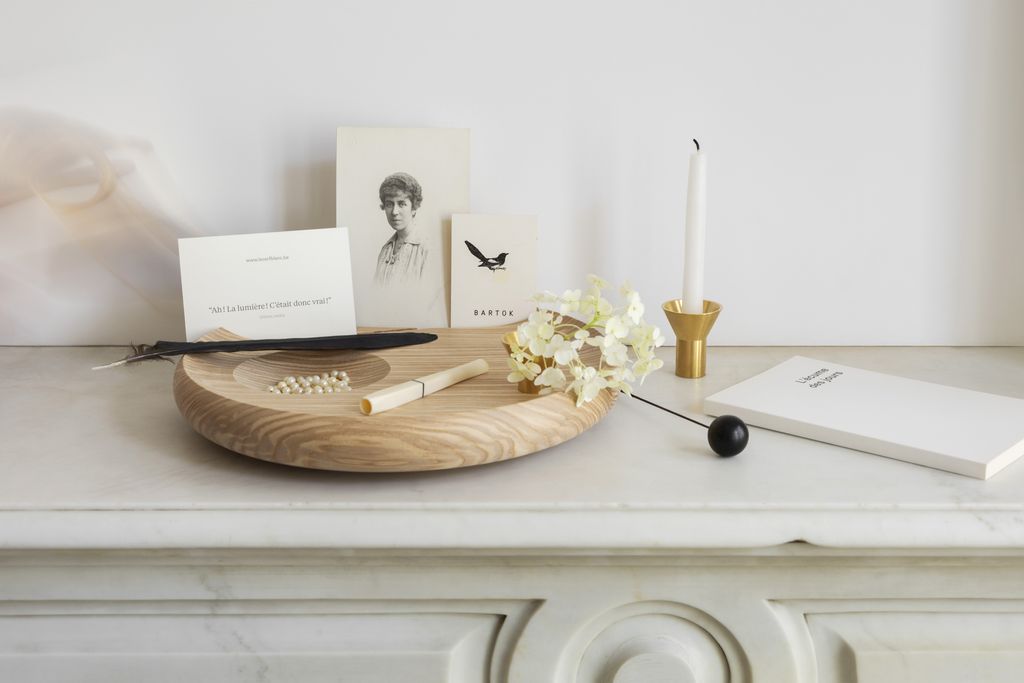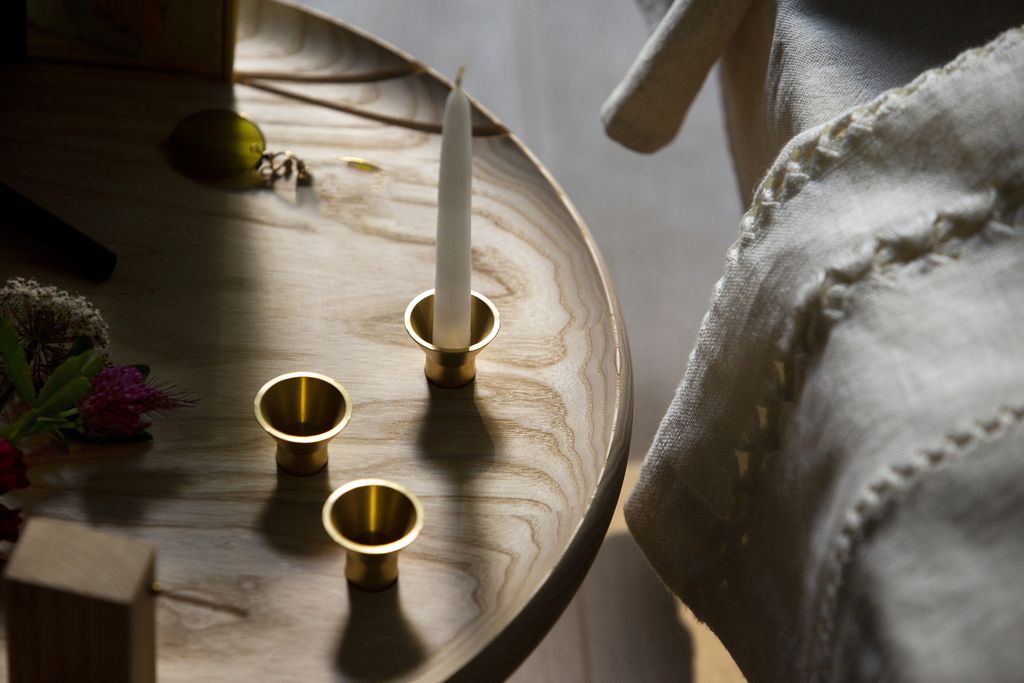Through her collaboration with Belgian designers, among other things, Kate Houben intends to put beauty back at the heart of funeral rituals. Through objects, her company, which was founded in 2020, questions certain habits and practices in a sector in search of greater humanity.

Tell us about the origins of this project, which is quite unusual on the whole?
It is the result of a long period of reflection, which began with the death of my mother in 2015. I was struck by the established side of certain practices, but also the lack of humanity and how I was obligated to make choices that weren’t right for me at all. I realised how much the notion of design was missing from this sector. In particular because professionals in the funeral industry did not deem it necessary to introduce the notion of beauty. When I expressed my feelings, others seemed to share my point of view. As a result, I began historical and philosophical research into the evolution of funeral practices in the West. In 2019, I trained as a funeral director as a way to gain access to the profession.

You have said that speaking about funeral beauty remains a daring gamble.
Before founding Le Cerf Blanc, I worked in graphic and visual arts. Because of that, I wanted to work with craftsmen and designers who had no links to the funeral sector. Sometimes, coming together is impossible, or takes time in any case. In a context as unique as this, you have to talk for quite a long time sometimes before an object can be created.

Tell us about this long process that leads to the creation of these new funeral objects.
These collaborations are the result of sharing. I always start by discussing my beliefs with the designers, and theirs as well. I listen to them tell me about their personal experiences, what moves them and what they have gone through personally. For me, it is crucial that they are really inspired by the project. Next comes research about the objects. We work with Belgian craftsmen. Each creation is then tested in the field to see if its fulfils its duty and, in particular, what reaction people have to it. I am especially thinking about this small wooden altar designed by Jean-François D’Or and manufactured by a Brussels-based carpenter. Normally, they are shocked, but in a good way. Our objects are intended to touch the senses. As these are unique pieces, produced in Belgium, they come at a price, but I make sure they are still affordable and, as a result, accessible to as many people as possible, including people who do not consider design as much. I think that beauty lies, first and foremost, in the quality of human relationships. This is what I call the beauty of gestures.

Your research also revolves around textile art.
I notably worked on an object with Éric Chevalier and Anne Masson that I give to the families of the deceased when I meet them for the first time. It is a small scrap of a wool veil inspired by 19th-century mourning handkerchiefs, with shrouds and coffin fillings added. When we develop new objects or rethink certain practices, I make sure not to skip steps. The idea is to inspire imagination and creativity in a sector where little or nothing changes, not to shock people. At the end of the funeral ceremony, I give each family a flower brooch made from embossed fabric by Brussels-based artist Dorothée Catry. This object stems from my reflection on the external signs of mourning. It is about returning to it, but gently. While some people find themselves blocked when it comes to a new ritual or object, I suggest leaving it at home and using it, without pressure. Most times, they soon overcome their preconceived ideas.

Stimulating the imagination is the idea behind the name you gave your project.
The white stag (cerf blanc) is a psychopomp animal who guides humans to the afterlife in Celtic and Christian mythology. I also chose this name because of its intergenerational appeal. Children are often excluded from funeral rites. I wanted to include them again in my designs. Plus, the mysterious side of this name sparks the imagination. I firmly believe that creativity and imagination have therapeutic properties that can alleviate pain during grieving. This is also why I collaborated with Margaux Baert, a stationery artist who reflected on the idea of offerings with me. The flowers that can be assembled that she came up with allow the deceased’s loved ones to make a ritual object themselves, an object that unites and consoles in equal measure.
